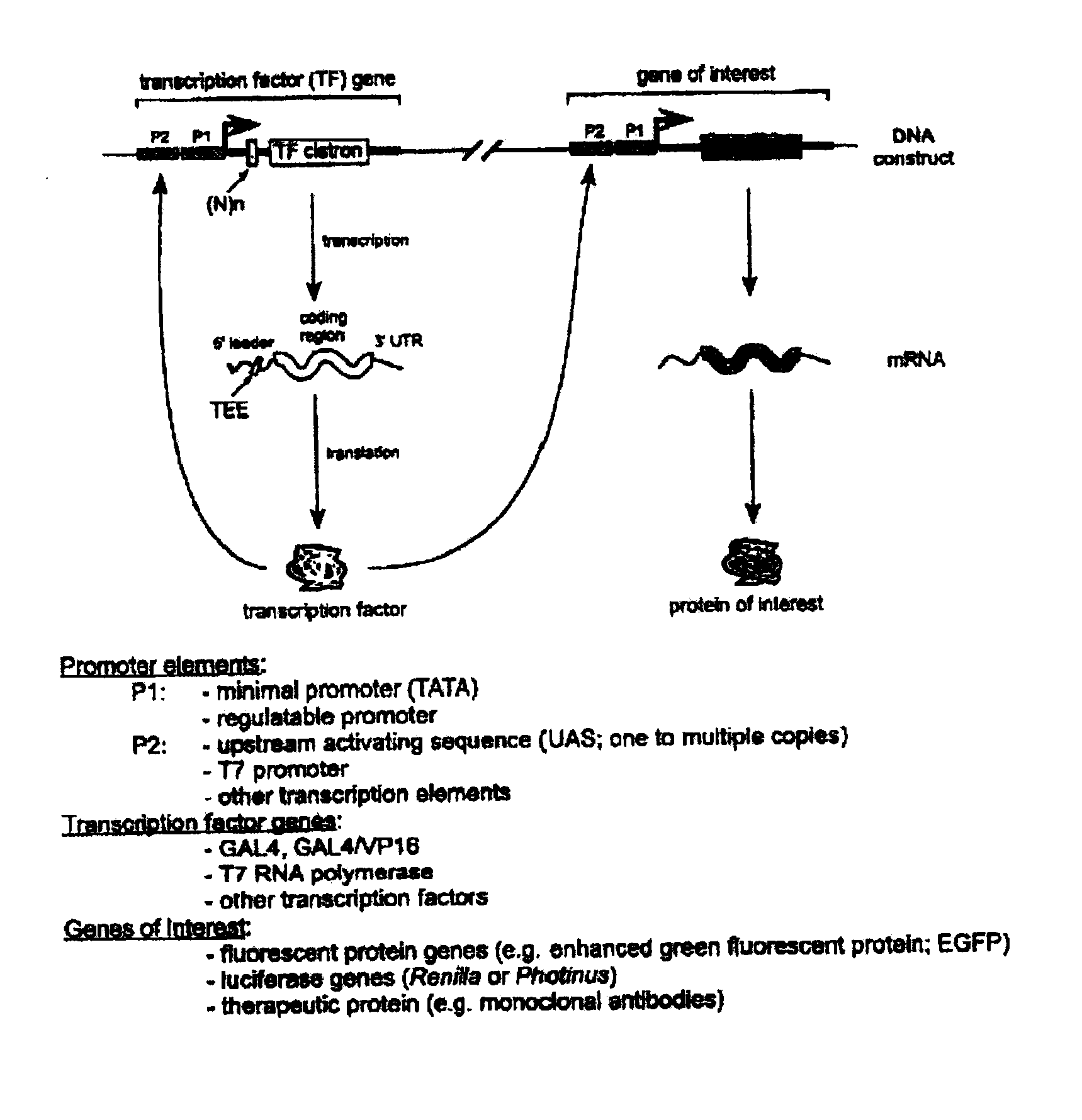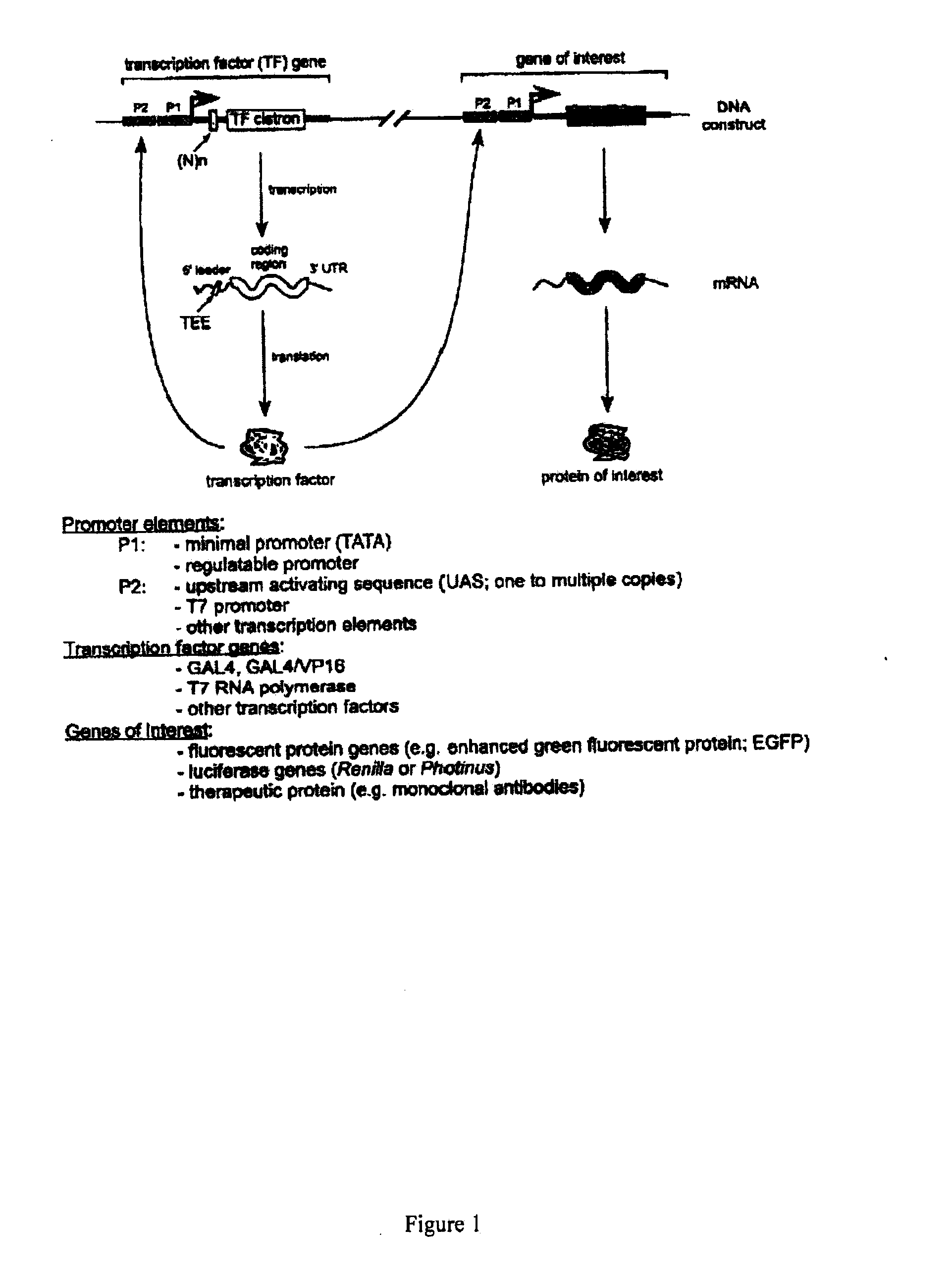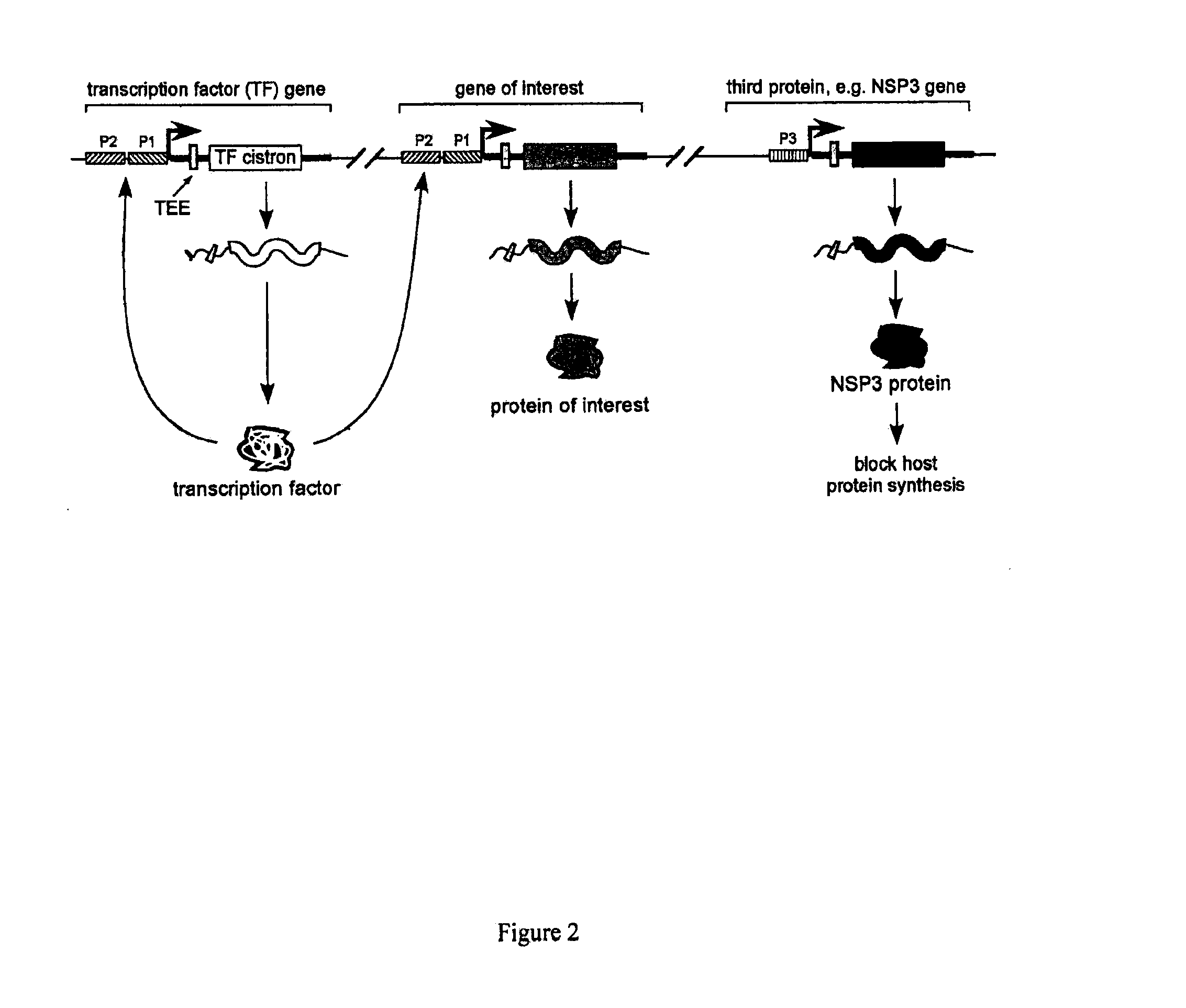Translation enhancer-element dependent vector systems
a technology of enhancers and vector systems, applied in the field of vector constructs, to achieve the effect of leveling the gene product expressed from the first constru
- Summary
- Abstract
- Description
- Claims
- Application Information
AI Technical Summary
Benefits of technology
Problems solved by technology
Method used
Image
Examples
example 1
Experimental Procedures / Materials
Construction of Vectors
The constructs used in the present invention express one or more cistronic mRNAs that encode a transcription factor, protein of interest and / or a protein blocking host protein synthesis. Promoters used to drive transcription of the cistronic mRNAs consist of a minimal promoter (TATA box) or regulatable promoter, alone or in combination with one or more other transcriptional elements, including upstream activating sequences (UAS) and bacteriophage specific promoters. For feedback vectors, a first cistron would comprise a gene encoding a transcription factor, which is inserted downstream from a known or unknown TEE. One such construct, containing a known TEE, would comprise a TATA box promoter element, one or more UAS sequences, and one or more Gtx modules upstream from a cistron encoding Gal4 / Vp16.
example 2
Positive Feedback Reporter Vector for Identifying TEE elements
Construction
As shown in FIG. 4, the promoters used to drive transcription in this example comprise a minimal promoter (TATA box) in combination with four copies of the GAL4 upstream activating sequence (UAS). The first transcription unit encodes the GAL4 / VP16 fusion protein and the second transcription unit encodes EGFP. The TEE insertion site (denoted by “N” in FIG. 4) contains nucleotides from a library of 18 random nucleotides. The vector backbone is based on plasmid pHRG-B (Promega, Madison, Wis.). The original BamHI site in pHRG-B was mutated so that both EcoRI and BamHI sites in the TEE insertion site were unique. The random N18 fragments are cloned into this reporter vector by using the EcoRI and BamHI restriction sites.
Cell Culture and Transfection Analysis
Reporter constructs are transfected into Chinese hamster ovary cells (CHO) (2×104) by using FuGENE 6™ (Roche, Alameda, Calif.). Transfection efficiencies are no...
PUM
| Property | Measurement | Unit |
|---|---|---|
| nucleic acid | aaaaa | aaaaa |
| secondary structures | aaaaa | aaaaa |
| length | aaaaa | aaaaa |
Abstract
Description
Claims
Application Information
 Login to View More
Login to View More - R&D
- Intellectual Property
- Life Sciences
- Materials
- Tech Scout
- Unparalleled Data Quality
- Higher Quality Content
- 60% Fewer Hallucinations
Browse by: Latest US Patents, China's latest patents, Technical Efficacy Thesaurus, Application Domain, Technology Topic, Popular Technical Reports.
© 2025 PatSnap. All rights reserved.Legal|Privacy policy|Modern Slavery Act Transparency Statement|Sitemap|About US| Contact US: help@patsnap.com



